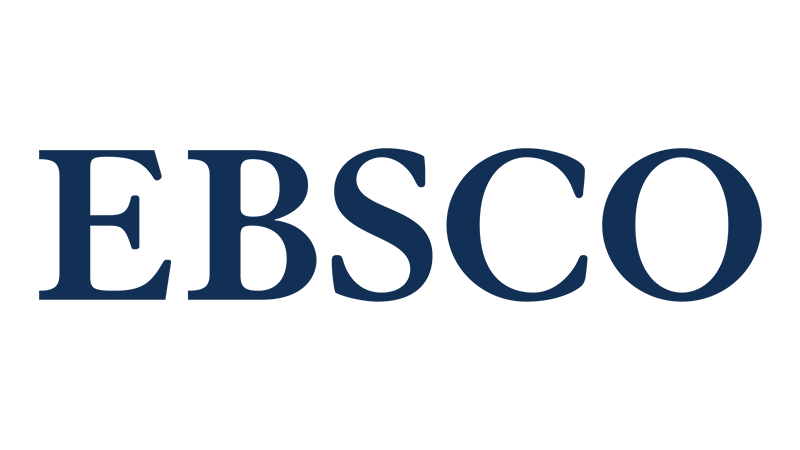
Author Guidelines
Business Review welcomes original papers using different theoretical perspectives and methodological approaches. Authors are requested to submit their papers electronically using the online submission system (Only manuscripts submitted through the online submission system will be considered for the editorial process). Please direct queries relating to the submission process to the journal's editorial office at businessreview@iba.edu.pk
This page provides the details on typesetting and layout requirements pertaining to final manuscript submission to Business Review.
Formatting Requirements
- The language of the journal is English. 12-point type in one of the standard fonts: Times New Roman or the closest comparable font is preferred.
- Submit your manuscript, including tables, figures, appendices, etc., as a single file (Word, RTF, or PDF files are accepted).
- If the table is created in Excel, the file should be uploaded separately.
- Upload editable manuscript files. Preferred file formats are .doc, .docx. LaTeX files may be submitted provided that .pdf file is provided in addition to the source files. Figures may be provided in .tiff or .eps format.
- Enter the full title, names and affiliations of all authors. Give the full address, including email, telephone and fax, of the author who is to check the proofs.
- Include the name(s) of any sponsor(s) of the research contained in the paper, along with grant number(s).
- Enter an abstract of up to 250 words. An abstract is a concise summary of the whole paper, not just the conclusions, and is understandable without reference to the rest of the paper. It should contain no citation to other published work.
- Provide a maximum of six key words immediately after the abstract
- Include JEL codes that describe your paper for indexing purposes.
- Manuscripts should be no more than 8000 words (including references) and must include an abstract and keywords.
- Do not include page numbers, headers, or footers. These will be added by the editors.
- Single space your text.
- Use a single column layout with both left and right margins justified.
- If figures are included, use high-resolution figures, preferably encoded as encapsulated PostScript (eps).
- Copyedit your manuscript.
- When possible, there should be no pages where more than a quarter of the page is empty space.
Additional Recommendations
Indenting, Line Spacing, and Justification
Indent all paragraphs except those following a section heading. An indent should be at least 2 em-spaces.
Do not insert extra space between paragraphs of text with the exception of long quotations, theorems, propositions, special remarks, etc. These should be set off from the surrounding text by additional space above and below.
Don't "widow" or "orphan" text (i.e., ending a page with the first line of a paragraph or beginning a page with the last line of a paragraph).
All text should be left-justified (i.e., flush with the left margin —except where indented). Where possible, it should also be right-justified (i.e., flush with the right margin). "Where possible" refers to the quality of the justification.
Language & Grammar
All submissions must be in English. Except for common foreign words and phrases, the use of foreign words and phrases should be avoided. Authors should use proper, standard English grammar.
Colored text
Set the font color to black for the majority of the text. Authors to ensure that there are no colored mark-ups or comments in the final version, unless they are meant to be part of the final text. (You may need to "accept all changes" in track changes or set your document to "normal" in final markup.)
Emphasized text
Whenever possible use italics to indicate text you wish to emphasize rather than underlining it. The use of color to emphasize text is discouraged.
Font faces
Except, possibly, where special symbols are needed, use Times New Roman or the closest comparable font available.
Font size
The main body of text should be set in 12pt. Avoid the use of fonts smaller than 6pt.
Foreign terms
Whenever possible, foreign terms should be set in italics rather than underlined.
Headings
Headings Headings (e.g., start of sections) should be distinguished from the main body text by their fonts or by using small caps. Use the same font face for all headings and indicate the hierarchy by reducing the font size. There should be space above and below headings.
Main text
The font for the main body of text must be black and, if at all possible, in Times New Roman or closest comparable font available.
Titles
Whenever possible, titles of books, movies, etc., should be set in italics rather than underlined.
Footnotes
Footnotes should appear at the bottom of the page on which they are referenced rather than at the end of the paper. Footnotes should be in 10 pt. Times New Roman or closest comparable font available, they should be single spaced, and there should be a footnote separator rule (line). Footnote numbers or symbols in the text must follow, rather than precede, punctuation. Excessively long footnotes are probably better handled in an appendix. All footnotes should be left and right-justified (i.e., flush with the right margin), unless this creates awkward spacing.
Tables and Figures
To the extent possible, tables and figures should appear in the document near where they are referenced in the text. Large tables or figures should be put on pages by themselves. Avoid the use of overly small type in tables. In no case should tables or figures be in a separate document or file. All tables and figures must fit within 1.5" margins on all sides (top, bottom, left and right) in both portrait and landscape view. Compound figures e.g. 1a, b, c should be uploaded as one figure. Tints are not acceptable. Lettering must be of a reasonable size that would still be clearly legible upon reduction, and consistent within each figure and set of figures. Where a key to symbols is required, please include this in the artwork itself, not in the figure legend. All illustrations must be provided at the correct resolution: Black-and-white and colour photos at 300 dpi and graphs, drawings, etc. at 800 dpi preferably or at minimum 600 dpi. The illustrations provided in colour will be used in the online version of the article and black and white in the printed version of journal.
Mathematics
Roman letters used in mathematical expressions as variables should be italicized. Roman letters used as part of multi-letter function names should not be italicized. Whenever possible, subscripts and superscripts should be a smaller font size than the main text.
Short mathematical expressions should be typed inline. Longer expressions should appear as display math. Also expressions using many different levels (e.g., such as the fractions) should be set as display math. Important definitions or concepts can also be set off as display math.
Equations should be numbered sequentially. Whether equation numbers are on the right or left is the choice of the author(s). However, you are expected to be consistent in this.
Symbols and notation in unusual fonts should be avoided. This will not only enhance the clarity of the manuscript, but it will also help insure that it displays correctly on the reader's screen and prints correctly on her printer. When proofing your document under PDF pay particular attention to the rendering of the mathematics, especially symbols and notation drawn from other than standard fonts.
References
It is the author's obligation to provide complete references with the necessary information. After the last sentence of your submission, please insert a line break—not a page break—and begin your references on the same page, if possible. References should appear right after the end of the document, beginning on the last page if possible. References should have margins that are both left and right- justified. You may choose not to right-justify the margin of one or more references if the spacing looks too awkward. List all sources in the reference list alphabetically by name.
In text citations should follow the author-date method. This means that the author's last name and the year of publication for the source should appear in the text, for example, (Jones, 1998), and a complete reference should appear in the reference list at the end of the paper.
When there are two authors, use both last names. For instance, "Edlin and Reichelstein (1996) claim . . . "If there are three or more authors give the last name of the first author and append et al. For instance, a 1987 work by Abel, Baker, and Charley, would be cited as "Abel et al. (1987)."
If two or more cited works share the same authors and dates, use "a," "b," and so on to distinguish among them. For instance, "Jones (1994b) provides a more general analysis of the model introduced in Example 3 of Jones (1994a)."
When citations appear within parentheses, use commas—rather than parentheses or brackets—to separate the date from the surrounding text. For instance," ...(see Smith, 1776, for an early discussion of this)."
References are styled according to the 7th edition of the Publication Manual of the American Psychological Association. A sample of the most common entries in the reference lists appears below. Please note that for journal articles, issue numbers are not included unless each issue in the volume begins with page one.
Journal Article: Bai, J. S., & Perron, P. (2003). Computation and analysis of multiple structural change models. Journal of Applied Econometrics, 18(1), 1–22.
Camacho, M., Perez-Quiros, G., & Poncela, P. (2015). Extracting nonlinear signals from several economic indicators. Journal of Applied Econometrics, 30, 246–265.
Working Paper: Garratt, A., Lee, K., & Shields, K. (2015). Economic sentiment, international interdependence and output dynamics in the G7. EMF Research Paper No. 04. University of Nottingham, England. Available at https://ideas.repec.org/p/wrk/wrkemf/04.html
Book: McConnell, C., Brue, S., Flynn, S. (2021). Economics (22nd ed.). New York: McGraw Hill.
After Acceptance – Copyright
Upon acceptance of the article, the author/(s) will receive ‘Author Agreement Form’ that includes policy of copyright. For instance, the journal holds no responsibility for any legal issues arising from copyright infringement or other matters related to the article; the author is solely responsible. Proper references, citations, and permissions for copyrighted material used in the article are provided by the author. The author retains full copyrights of their work, granting the journal a license to publish, distribute (in print, online, etc.), and make necessary changes. In the event of a copyright infringement complaint, the corresponding author must provide evidence of the paper’s originality to satisfy the claiming authority. If infringed material is found, the accepted paper will be withdrawn, and the author may be blacklisted for future submissions.










